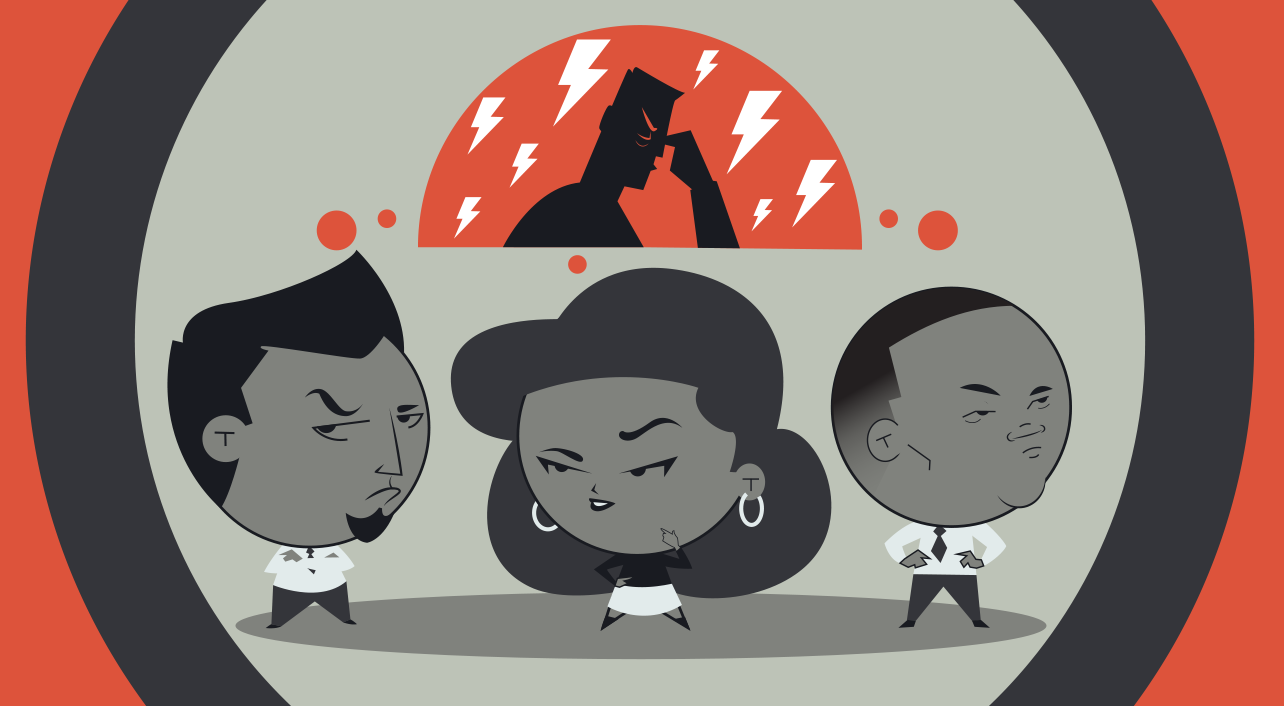- leadership
- Blog post
Are brainstorming sessions better when they’re stormy?
“There are no bad ideas.”
You’ve no doubt heard this old adage many times. And if you’re a leader of a team or a department, you may have sought to apply it to those meetings where you’re trying to tease new ideas out of your people through the process known as brainstorming.
Just let people put their ideas out there without fear of snide remarks or incredulous facial expressions. Don’t let fear of criticism silence anyone – after all, you never know where that next great idea for your products or your operations is going to come from. In other words, no judgments in the brainstorming session itself. You can always sift the wheat from the chaff later.
This all sounds good. The only thing is, it doesn’t reflect the actual psychology of groups, as illustrated by behavioral research.
To dissent or not to dissent
In an experiment led by a psychology professor at UC-Berkeley, five-person teams of volunteers were asked to brainstorm ideas for reducing traffic congestion in the San Francisco Bay area.
Some of the teams were told to follow the model we referred to earlier: Throw all the ideas you can out there on the table without making any judgments about their value or lack thereof. Other teams were told to find as many solutions as they could, but were instructed to allow dissent during the session itself. In other words, it was OK to say, politely, that an idea had no legs if you could explain why you thought so.
Defying the conventional wisdom, the second group of teams – the one where dissent was OK – enjoyed more success than the first group, where the motto was Anything Goes. In fact, they produced fully 20 percent more ideas. And the fruitfulness of this method didn’t stop at the end of the brainstorming session proper: In follow-up questions, the teams in the second group came up with seven additional ideas, compared with three in the first group.
Refining the ideas
So brainstorming works better when it’s, well, a little stormy. Why?
The researchers said dissent stimulates the kind of thought, within individuals and within the group, that’s required to make brainstorming work. Individuals are obliged to look again at their ideas, to dig deeper, to refine concepts. As a group, people find flaws and reframe the ideas into something better.
But a caveat: You don’t want to let brainstorming get too stormy. Any conflict should be over ideas, not personalities. So before you start each session, remind participants of the rules: Criticism is productive when it’s about improving ideas, destructive when it’s about taking shots at other people. Make clear that you’ll call a halt if you see the latter happening. And do it, if you have to.
Be prepared
No matter how you run your brainstorming sessions, they work best if you make sure everybody prepares for them. You might consider helping your team prepare by sending out an email that does something like this:
- Explains the problem or opportunity that you’re going to brainstorm about
- Includes material from the press or a specialized publication dealing with similar problems or opportunities, and
- Asks each participant to submit three ideas and be prepared to discuss and defend them at the meeting.
When you do this, people won’t come into the meeting and just wing it. They’ll be more likely to take the challenge seriously and produce the best ideas they’re capable of. And that’s what you want, right?
(This blog entry is adapted from the Rapid Learning module, “How to Get More and Better Ideas From Brainstorming Sessions,” based on the following research study: Feinberg, M., & Nemeth, C. (2008). The” Rules” of Brainstorming: An Impediment to Creativity? University of California-Berkeley Working Paper.)

Get a demo of all our training features
Connect with an expert for a one-on-one demonstration of how BTS Total Access can help develop your team.



